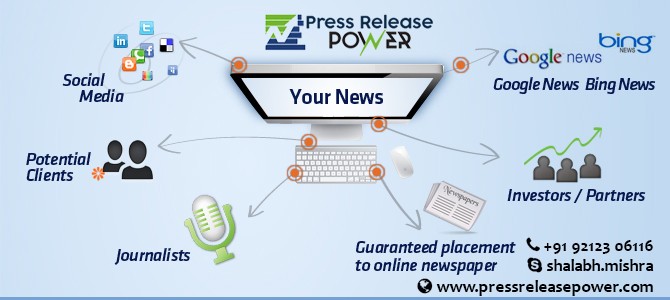Introduction
News is an essential part of business. It can help you attract new customers, generate sales leads and even drive traffic to your website. But if you're not careful, news can also spell the end for your startup. If a reporter finds out about your business through social media or hears about it from someone else then this could be disastrous for your company's reputation.
To ensure that doesn't happen to you (or anyone else in your industry), try following these tips when submitting press releases:
Submitting a poorly written press release.
A poorly written press release is one of the most common mistakes that a startup can make. This mistake can be easily avoided, though, if you take the time to think about how you want your press release to sound and what it should contain. The first thing that needs to be done is choosing an effective headline and subheadline. The second step is making sure your copy is clear, concise and easy to understand by anyone who reads it—this includes potential reporters or journalists who may pick up on your story as part of their jobs!
A well-written press release format will also use active voice instead of passive voice, which means switching from third person singular (he/she) into first person plural (we). Additionally, avoid using unnecessary technical jargon as much as possible; instead focus on communicating with simple language that everyone can understand rather than focusing on what makes sense for only one particular audience type (e.g., business owners vs media professionals). Finally, try using contractions whenever possible—these show off good grammar skills while still allowing readers' eyes stay focused on each word individually without feeling overwhelmed by too many items being crammed onto screen at once!
Failing to customize your press release.
To get the most out of your press release template, it’s important to customize every part of it. This can be as simple as changing the title or keywords from one outlet to another. You should also include a paragraph or two that is specific to each outlet you send it to (for example: “For those who read The New York Times, this news release will not be of interest). Finally, make sure that if there are any links in your press release they are listed under ‘External Link’ instead of being automatically generated text like everything else in a normal webpage would be.
Not including any quotes.
When you're writing press releases, quotes are a great way to add credibility and interest. But they also have the potential to confuse readers if they're not relevant, interesting or specific enough.
For example: "We've been working hard on our product for the last six months" isn't as effective as "Our new product helps people with diabetes manage their disease." The latter is more specific (and likely to be more useful) than just saying something like "We want people who have diabetes".
Quotes should also be brief—they won't take long in your reader's inbox if they don't include any additional information about how your company can help them solve their problem! If possible, try using quotes from authoritative sources such as doctors or health experts who know exactly what you're talking about."
Sending your release to the wrong audience.
Sending your release to the wrong audience.
Press releases are not the same thing as blog posts, and they shouldn't be treated like them. A press release is meant to be sent to journalists, who then write articles that get published in newspapers and online publications around the world (and sometimes even on TV news stations). Blog posts are meant for your customers—those who will actually read them! Your news release example should also be written in a way that makes it easy for journalists of all types (including social media influencers) who run their own blogs or have large followings on Twitter/Facebook etcetera could easily understand what you're saying about your company or product offerings.*
Omitting a call to action (CTA).
A call to action is a request for your reader to take an action. It can be as simple as "Buy now!" or it could be more nuanced, such as "Sign up for our newsletter and get 10% off your first order." Whatever you choose, remember that the purpose of a CTA is to encourage people to do something—to buy something, subscribe to something, or whatever else they might want in exchange for reading your press release and contact information.
To create an effective CTA:
Make sure it's relevant
Tell them why they should do what you're asking them to do (e.g., "free shipping!")
Not optimizing your press releases for search engines.
In order to optimize your press release for search engines, you need to ensure that it contains keywords in the title and body of your release. This will help Google find relevant results for people who are looking for those terms.
You should also include a keyword-rich headline as well as an article title that includes these same exact words because they're more likely to be clicked on by readers than ones without them. You can use "keywords" throughout the body of your media release example as well if there are any terms or phrases within it that relate back toward what was discussed in the headline or article title (for example: "keyword-rich" vs "keyword-heavy").
Forgetting to follow up with reporters.
Don't be afraid to follow up.
Send an email or make a phone call, but don't try to sell your product or service.
Follow these tips and you'll be much more likely to get picked up by the media!
Make sure you have a good story to tell. The press release is often the first place people go when they want to learn more about your company and its products or services, so it's important that what you're saying resonates with them. If possible, include quotes from team members who can explain how their company helps solve problems for users in their industry.
Be sure to include quotes from your team members in addition to yourself (or if they aren't allowed by law). Your background makes up half of what makes up every single bit of information we read on the web—and even more so if that site is coming from an authority like CNN or Business Insider! So make sure whatever information comes through those channels has been vetted by someone who knows what they're doing; otherwise those articles could damage both yours and theirs' reputations unnecessarily."
Conclusion
We hope you've found these tips helpful. In today's media-saturated world, it can be easy to feel overwhelmed and lose focus on your goals. But remember that every sample press release template is a chance for you to get in front of your target audience and help them learn more about your company! As we've seen above, there are plenty of mistakes that people make when they're trying to get their message out there—but by following these steps, you'll be much more likely to succeed at getting picked up by reporters or journalists in general.
Get in Touch!
Website – https://www.pressreleasepower.com
Skype – shalabh.mishra
Telegram – shalabhmishra
Email –contact@pressreleasepower.com
Mobile – +1 (855) 222-4111







 English (US) ·
English (US) ·